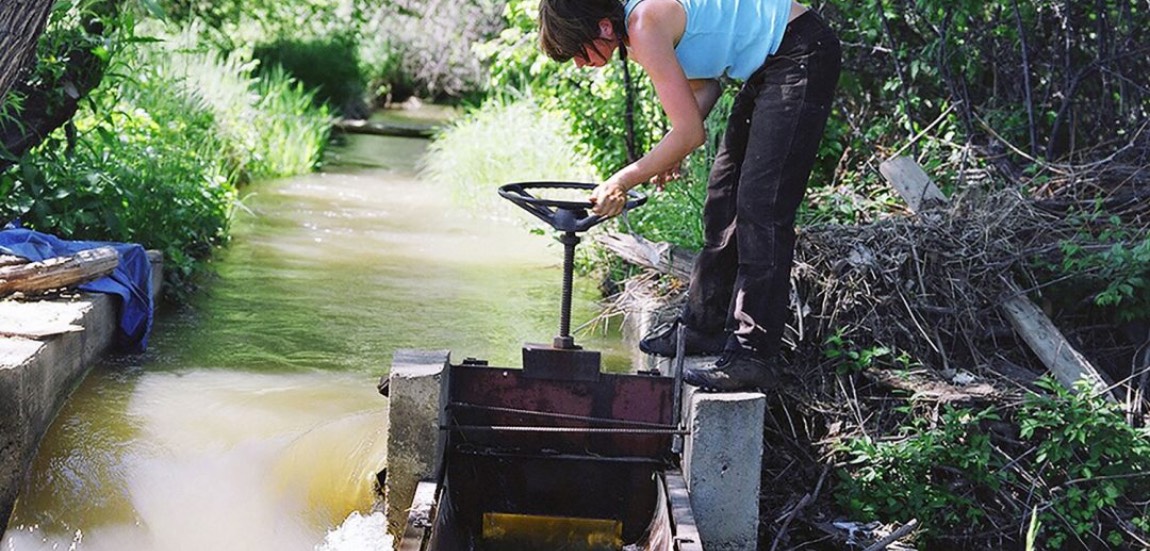I felt a sense of excitement when I received the press release from Representative Marc Catlin’s office about House Bill 24-1362, signed into law by Governor Jared Polis on May 29.
From the press release we shared last week:
This law authorizes the installation of graywater treatment works in new construction projects. Graywater systems recycle in-home water from laundry, shower, bath, or sinks. Though below drinkable standards, this graywater can be reused for toilets and watering lawns. The bill passed the legislature with unanimous approval…
Yesterday, I mentioned the controversies that have been unfolding in the American Southwest over the past two decades, concerning the growing stress on water resources — especially the shared resource of the waters of the Colorado River, to help meet the needs of maybe 40 million people. In a typical year, about 15 million acre feet of water flows down the Colorado and its tributaries, and through the Southwest’s two largest water reservoirs, Lake Mead and Lake Powell — but in recent years, more has been extracted from the reservoirs than the river has been able to provide, thus causing an apparent water crisis.
Thus, a moment of celebration… as Colorado takes a ‘small step’ to address the crisis with HB24-1362. By ‘recycling’ the water we divert, and using it more than once, this small step could theoretically lessen our need to divert water, and allow our limited water resources to stretch further.
How small might that step be?
Pretty doggone small, as it turns out.
I’ve long had the impression that the residential or commercial recycling of ‘graywater’ was illegal in Colorado, even for watering a garden. But reading through HB24-1362, I found references to existing Colorado laws that tell a slightly different story.
Apparently, ‘graywater’ has been an optional water resource since 2013. If your local government allows it.
From our existing Colorado Revised Statutes, 25-8-205:
Except as authorized in section 25-8-205.3, graywater may be used only in areas where the local city, city and county, or county has adopted an ordinance or resolution approving the use of graywater pursuant to section 30-11-107 (1)(kk) or 31-15-601 (1)(m). The city, city and county, or county that has adopted an ordinance or resolution approving the use of graywater pursuant to section 30-11-107 (1)(kk) or 31-15-601 (1)(m) has exclusive enforcement authority regarding compliance with the ordinance or resolution.
As I understand this existing law, the Pagosa Springs Town government and the Archuleta County government could have authorized the use of graywater ten years ago. To my knowledge, neither of our local governments have done this.
Not that it’s a simple matter to start using graywater. The Colorado Department of of Public Health and Environment (CDPHE) has 47 pages of regulations to control how, exactly, a business or household can (and cannot) use graywater. The regulations begin like this:
Graywater is expected to carry human pathogens with various risk levels and pathways that have the potential to be dangerous to public health. Therefore, the purpose of this regulation, as authorized by section 25-8-205(1)(g), is to describe requirements, prohibitions, and standards for the use of graywater for nondrinking water purposes, to encourage the use of graywater, and to protect public health and water quality…
What Representatives Marc Catlin and Meghan Lukins did by getting legislative approval for HB24-1365 was to switch the approval and prohibition authority on its head. Under the new law, graywater use (following CDPHE rules) will be allowed everywhere in Colorado, unless a local government specifically prohibits or limits its use. (Knowing as we do how slowly government reacts to new situations, I suspect very few local governments will go to the trouble of prohibiting graywater.). The new law takes effect in January 2026.
But in order to use graywater under the new law, a home or business must install “graywater treatment works” — a specially-designed plumbing system to ensure that your graywater doesn’t kill anyone. According to one website, a “graywater system” costs between $1,000 and $5,000.
There’s a huge imitation built into HB24-1362, however: it applies only to new construction.
I understand that, historically, water has been one of the main transport systems for contagious diseases, and I also understand that the plumbing industry — in its ongoing quest to help prevent the spread of those contagious diseases — has become one of the most profitable industries in America. I’m not going to complain about HB24-1362 being a small step in addressing our water crisis. But we ought to understand just how small that step really is.
Here in Archuleta County, about 94% of the water diverted locally goes into ‘agriculture’. That is to say, into growing grass for cows.
The percentage for the entire state, used for agriculture, is around 89% of the total 5.3 million acre feet consumed, according to Colorado State University.
4.7 million acre feet, diverted and used for agriculture. None of this water can be recycled as graywater.
Of the remaining water, about 7.5% percent is used for residential and commercial purposes, and maybe 50% of that can qualify as graywater that could be recycled. (But it must be recycled within 24 hours, to prevent the spread of disease.)
We have about 2.3 million households in Colorado, and we add about 27,000 new homes per year. HB24-1362 goes into effect in 2026, and if every new home built that year installed a graywater treatment system, that would mean about 1% percent of our homes could now be recycling up to 50% of their water.
5.3 million acre-feet consumed in Colorado X 7.5% used by municipalities X 1% of homes with graywater systems X 50% of water recycled.
Theoretically, Colorado would be recycling perhaps 2,000 acre feet of water… out of 5.3 million acre feet consumed. 0.3% of our water use.
A pretty small amount of water, comparatively. A drop in the bucket, you might say.
But… a step in the right direction?
I personally think we could come up with much more effective laws.

